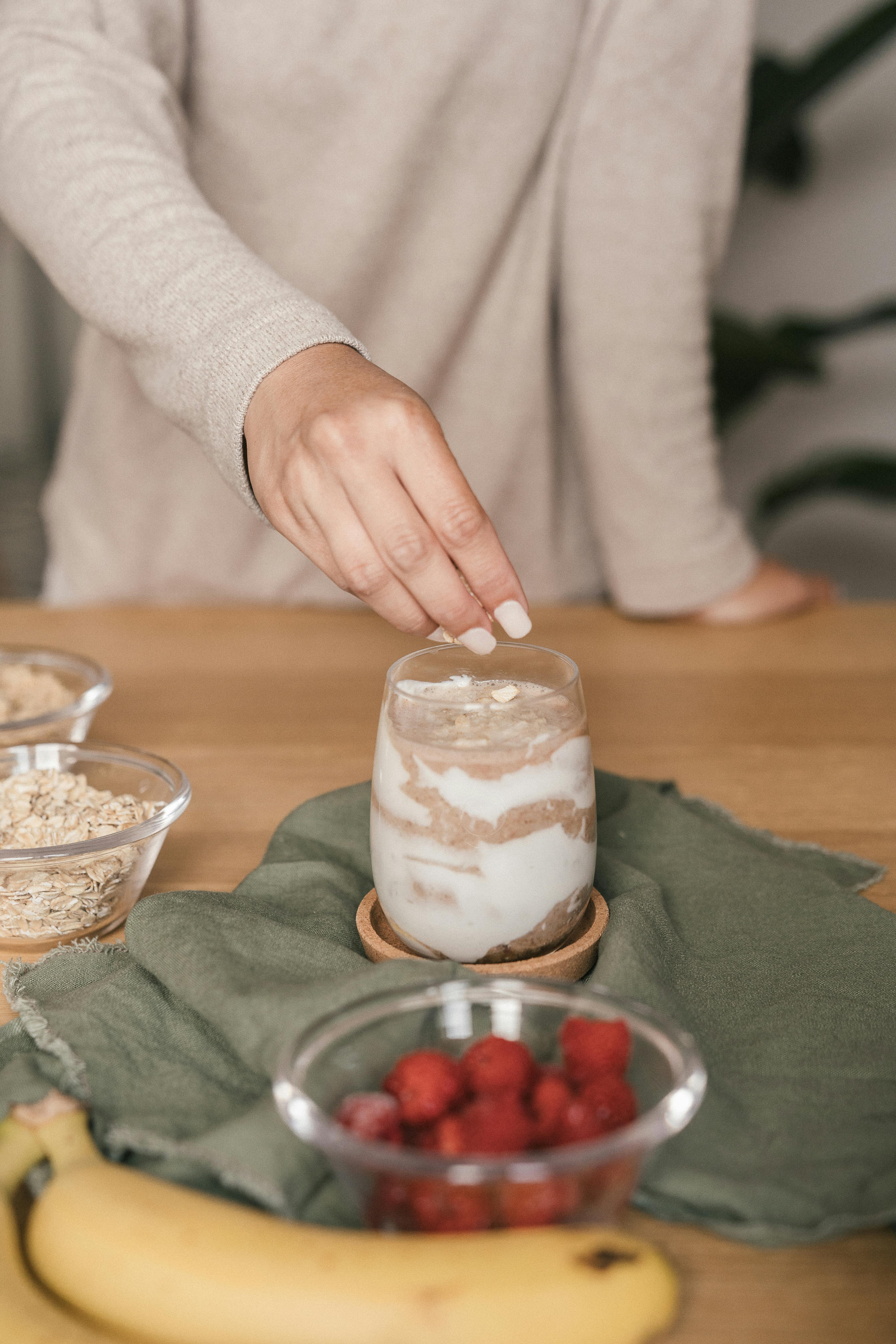Apply Now
Understanding Keto Rash: Overview and Symptoms
Keto rash, often referred to as "keto rash," is a common skin condition that can occur when individuals adopt a ketogenic diet. This rash results from the body's adjustments to significant dietary shifts, typically when transitioning into ketosis. It's important to note that while keto rash can be uncomfortable and alarming, it is a manageable condition that often resolves itself as the body acclimates.
Symptoms of keto rash can vary widely among individuals, but common manifestations include red, itchy, and inflamed patches on the skin. These areas may appear on various parts of the body, including the chest, back, and arms. To understand the appearance of keto rash better, here are some keto rash pictures that illustrate its typical characteristics. The initial appearance of the rash can often raise concerns, making it vital to share accurate information about what to expect.
As we delve deeper into this topic, we will explore the causes behind keto rash, how to treat it effectively, and essential tips for managing this skin condition. By grasping these concepts, you'll have a clearer understanding of not just the keto rash itself, but how it fits within the broader context of a ketogenic lifestyle.
Keto Rash Causes: Exploring Dietary Connections
One of the primary causes of keto rash is the body's transition into ketosis, a metabolic state achieved through a significant reduction in carbohydrate intake. As the body adapts to burning fat for fuel instead of carbohydrates, it may produce compounds called ketones, which can lead to inflammation and skin reactions.
Increased inflammation is a known consequence of a ketogenic diet and can trigger skin issues, especially if hydration levels are low. Insufficient water intake may exacerbate the rash, worsening symptoms and prolonging its duration. Incorporating hydrating supplements or increasing water consumption can be beneficial.
Another cause can be attributed to nutrient deficiencies arising from restrictive eating patterns often associated with the ketogenic diet. It’s essential to ensure adequate intake of vitamins and minerals, particularly those known for skin health, such as vitamin E and omega-3 fatty acids. These nutrients can mitigate inflammation and support a healthy skin barrier.
Understanding these connections is vital to implementing effective keto rash treatments. Knowing what triggers the rash can help in managing and preventing its occurrence in the future.
Keto Rash Appearance: What to Look For
The appearance of keto rash can vary widely, often resembling other skin conditions such as eczema or contact dermatitis. Typically, the rash appears as red or pink spots, often raised and accompanied by itchiness. In cases where inflammation is significant, the rash may also develop into small bumps or even blisters.
To better understand what keto rash looks like, you can reference several pictures of keto rash available online. These visual guides can help you recognize the condition and differentiate it from other skin issues.
It is also critical to understand that while keto rash can be alarming, it does not indicate a serious medical concern in most cases. However, if symptoms persist or worsen, it is recommended to consult a healthcare professional for proper diagnosis and advice.
Keto Rash vs. Other Rashes: Distinguishing Factors
When experiencing a rash, distinguishing keto rash from other skin conditions is crucial for appropriate treatment. The primary differentiator for keto rash is its onset, typically occurring during the initial weeks of starting a ketogenic diet. Unlike allergic reactions or rashes caused by contact with particular substances, keto rash arises from dietary changes.
Keto rash often appears in areas exposed to friction or sweat, such as the chest and neck, which can sometimes blur the lines between different types of rashes. Observing the timing of the rash's appearance relative to diet changes can also help in identifying it correctly.
Common rashes like eczema or psoriasis, while similar in presentation, often involve other underlying health factors and can occur independently of dietary changes. They may require targeted skincare approaches and treatments.
Understanding these distinctions aids in approaching treatment effectively. Next, we will explore various methods to manage and treat keto rash effectively.
How to Treat Keto Rash: Effective Management Strategies
Managing keto rash can be straightforward, especially with the right information and strategies in place. Treatment often begins with basic skincare and dietary adjustments to alleviate symptoms.
Keto Rash Home Remedies: Natural Solutions
Many individuals prefer to start with home remedies for keto rash management, aiming for natural ways to soothe irritated skin. A popular remedy involves applying coconut oil to affected areas. Coconut oil is known for its moisturizing properties and contains anti-inflammatory compounds that can help reduce redness and swelling.
Alternately, using aloe vera gel can provide relief thanks to its soothing and hydrating effects. Mixing aloe with a few drops of essential oils, like tea tree oil, can enhance its antibacterial properties while simultaneously helping with itch relief.
Incorporating products that are free from harsh chemicals and fragrances can also play a significant role in managing skin irritation. Following a mild skincare routine based on hydration can further support skin health during this transition.
Keto Rash Treatment Options: Medical Approaches
For those seeking medical intervention, topical corticosteroids are one of the most common treatments prescribed for keto rash. These medications can promptly reduce inflammation and are particularly effective in severe cases. However, it’s essential to follow a physician's guidance to avoid any adverse side effects.
In some instances, dermatological consultations may be necessary for ongoing skin issues. Dermatologists can provide tailored advice on effective skincare products suited for individuals on a ketogenic diet, particularly concerning anti-inflammatory ingredients.
Coupling conventional treatments with dietary adjustments may lead to better outcomes. A more balanced diet inclusive of nutrient-rich foods can help in fortifying skin health, potentially leading to quicker recovery from keto-related skin issues.
Keto Rash Management Tips: Lifestyle Adjustments
As we move forward, adopting additional lifestyle adjustments can aid in skin health alongside dietary shifts. Prioritizing skin hydration through water intake and electrolyte balance is crucial. Dehydration can worsen keto rash symptoms and delay healing, so maintaining proper fluid levels is key.
Additionally, wearing breathable fabrics and loose-fitting clothing can help minimize irritation caused by friction and sweat. Often, this simple change can make a significant difference in skin comfort and reduce rash exacerbation.
Regularly monitoring your skin's reactions to dietary changes is another management strategy. Keeping a food diary can help identify potential triggers contributing to keto rash flare-ups, allowing informed adjustments in food choices to alleviate symptoms.
With these approaches in mind, we have laid the groundwork for understanding and treating keto rash effectively. Next, we will discuss the healing process and how long you can expect the rash to last.
Keto Rash Healing Process: Duration and Recovery
The healing duration for keto rash can vary significantly from person to person, depending on several factors, including individual skin types, dietary adherence, and overall health status. On average, keto rash may persist for a few days to a few weeks but should gradually diminish as the body fully adapts to the ketogenic lifestyle.
Keto Rash Recovery: What to Expect
During the recovery phase, it’s common to experience fluctuating symptoms. Initial redness may fade, but occasional flare-ups can occur if dietary indiscretions happen or if the skin becomes overly irritated from sweat or friction.
Utilizing the aforementioned remedies and treatments during this time can expedite healing. It’s crucial to remain vigilant about skin care and hydration to support the recovery process.
Keto rash usually resolves on its own, but if you notice persistent symptoms or severe reactions, consulting a healthcare professional for further advice is recommended. Monitoring the rash can help differentiate between keto rash and other skin conditions if it persists beyond typical expectations.
How Long Does Keto Rash Last? Timeline Analysis
For most individuals, upon implementing effective treatments, keto rash symptoms tend to resolve within two to four weeks. Factors influencing this timeline include adherence to the ketogenic diet, low-hydration levels, and individual skin health.
Feeling discomfort and seeking immediate solutions is understandable, but it’s important to trust the body’s natural healing process. Documenting the experience in conjunction with diet adjustments can be empowering and useful when consulting health professionals.
As the body repairs itself, maintaining a positive attitude toward recovery is beneficial. Keeping stress levels manageable can have positive psychological effects, enhancing overall wellness during this time.
Preventing Keto Rash: Essential Tips for Future Management
Preventing keto rash primarily involves proactive strategies focusing on diet management and skin health practices. By addressing potential triggers and nurturing skin vitality, you can significantly reduce the chances of experiencing this discomforting condition in the future.
Understanding Keto Rash Prevention: Lifestyle Practices
One of the most effective prevention strategies for keto rash is to ensure that hydration levels remain consistently high. Drinking plenty of water throughout the day can mitigate the risk of dehydration, a common exacerbating factor.
Incorporating foods rich in omega-3 fatty acids—such as fatty fish and flaxseeds—can also help in minimizing inflammation and supporting skin health, providing beneficial nutrients needed for healthy skin retention.
Another practical tip involves gradually easing into a ketogenic diet rather than initiating a sudden dramatic diet shift. Slowly reducing carbs while monitoring the body's reactions can lessen the skin’s shock and adaptive strain.
Alongside diet, skin care plays a crucial role. Using gentle, fragrance-free moisturizers can protect the skin barrier and keep skin well-nourished.
Keto Rash Management Tips: Best Practices
Implementing best practices in diet and skin care is quintessential for maintaining skin health throughout the keto diet. Essential practices may include:
1. Prioritizing nutrient-rich foods that align with the ketogenic diet, ensuring a comprehensive intake of vitamins known for their positive impact on skin.
2. Seeking support from healthcare providers or nutritionists to frame an optimum dietary structure.
3. Building a skincare routine involving soothing products that nourish and protect the skin barrier during dietary transitions.
Building awareness around keto rash will help others understand the condition, creating a supportive environment for those experiencing dietary-related skin issues.
Common Concerns about Keto Rash: Q&A
**Q: What is keto rash?**
A: Keto rash is a skin irritation that can occur when transitioning to a ketogenic diet, characterized by red, itchy patches on the skin.
**Q: How long does keto rash last?**
A: Typically, keto rash recovers within 2 to 4 weeks, depending on adherence to treatment and individual skin responses.
**Q: What causes keto rash?**
A: The primary causes include the initial transition into ketosis, skin dehydration, and potential nutrient deficiencies.
**Q: How can I prevent keto rash?**
A: To prevent keto rash, maintain adequate hydration, ensure a nutrient-rich diet, and consider gradual dietary modifications.
**Q: When should I see a doctor about keto rash?**
A: Consult a healthcare provider if symptoms persist beyond a few weeks or worsen, as they may indicate a need for further evaluation.
By understanding and managing keto rash effectively, you can enjoy your ketogenic journey while minimizing skin discomforts, allowing for a successful dietary experience.




